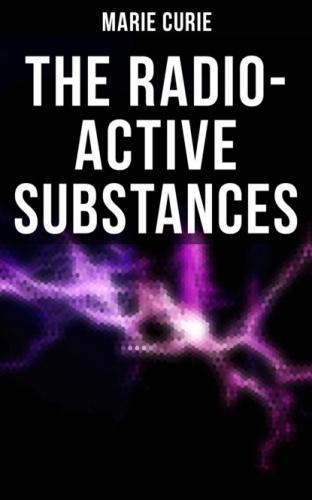The characteristics of the thorium radiation have formed the subject of very complete publications. Mr. Owens has demonstrated that a uniform current is only obtained after some time has elapsed, with an enclosed apparatus, and that the intensity of the current is greatly reduced under the influence of a current of air (which does not occur with the compounds of uranium). Mr. Rutherford has made similar experiments, and has explained them by the proposition that thorium and its compounds produce, besides the Becquerel rays, another emanation, composed of extremely minute particles, which remain radio-active for some time after their emission, and are capable of being swept along by a current of air.
The characteristics of the thorium radiation, which have reference to the thickness of the layer employed and to the action of air currents, have an intimate connection with the phenomenon of the radio-activity induced, and of its propagation from place to place. This phenomenon was observed for the first time with radium, and will be described later.
The radio-activity of thorium and uranium compounds appears as an atomic property. M. Becquerel has already observed that all uranium compounds are active, and had concluded that their activity was due to the presence of the element uranium; he also demonstrated that uranium was more active than its salts. I have investigated, from this point of view, the compounds of thorium and uranium, and have taken a great many measurements of their activity under different conditions. The result of all these determinations shows the radio-activity of these substances to be decidedly an atomic property. It seems to depend upon the presence of atoms of the two elements in question, and is not influenced by any change of physical state or chemical decomposition. The chemical combinations and mixtures containing uranium or thorium are active in proportion to the amount of the metal contained, all inactive material acting as inert bodies and absorbing the radiation.
Is Atomic Radio-activity a general Phenomenon?
As I have said above, I made experiments to discover whether substances other than compounds of uranium and thorium were radio-active. I undertook this research with the idea that it was scarcely probable that radio-activity, considered as an atomic property, should belong to a certain kind of matter to the exclusion of all other. The determinations I made permit me to say that, for chemical elements actually considered as such, including the rarest and most hypothetical, the compounds I investigated were always at least 100 times less active in my apparatus than metallic uranium.
The following is a summary of the substances experimented upon, either as the element or in combination:—
1. All the metals or non-metals easily procurable, and some, more rare, pure products obtained from the collection of M. Etard, at the Ecole de Physique et de Chimie Industrielles de la Ville de Paris.
2. The following rare bodies:—Gallium, germanium, neodymium, praseodymium, niobium, scandium, gadolinium, erbium, samarium, and rubidium (specimens lent by M. Demarçay), yttrium, ytterbium (lent by M. Urbain).
3. A large number of rocks and minerals.
Within the limits of sensitiveness of any apparatus, I found no simple substance, other than uranium and thorium, possessing atomic radio-activity. It will be suitable to add a few words here concerning phosphorus. White moist phosphorus, placed between the plates of the condenser, causes the air between the plates to conduct. However, I do not consider this body radio-active in the same manner as thorium and uranium. For, under these conditions, phosphorus becomes oxidised and emits luminous rays, whilst uranium and thorium compounds are radio-active without showing any chemical change which can be detected by any known means. Further, phosphorus is not active in the red variety, nor in a state of combination.
In a recent work, M. Bloch has demonstrated that phosphorus, undergoing oxidation in air, gives rise to slightly motile ions, which make the air conduct, and cause condensation of aqueous vapour.
Uranium and thorium are elements which possess the highest atomic weights (240 and 232); they occur frequently in the same minerals.
Radio-active Minerals.
I have examined many minerals in my apparatus; certain of them gave evidence of radio-activity, e.g., pitchblende, thorite, orangite, fergusonite, cleveite, chalcolite, autunite, monazite, &c. The following is a table giving in ampères the intensity, i, of the current obtained with metallic uranium and with different minerals:—
| i × 1011. | |
|---|---|
| Uranium | 2·3 |
| Pitchblende from Johanngeorgenstadt | 8·3 |
| Pitchblende from Joachimsthal | 7·0 |
| Pitchblende from Pzibran | 6·5 |
| Pitchblende from Cornwallis | 1·6 |
| Cleveite | 1·4 |
| Chalcolite | 5·2 |
| Autunite | 2·7 |
| Various thorites | 0·1 |
| 0·3 | |
| 0·7 | |
| 1·3 | |
| 1·4 | |
| Orangite | 2·0 |
| Monazite | 0·5 |
| Xenotime | 0·03 |
| Æschynite | 0·7 |
| Fergusonite (two samples) | 0·4 |
| 0·1 | |
| Samarskite | 1·1 |
| Niobite (two samples) | 0·1 |
| 0·3 | |
